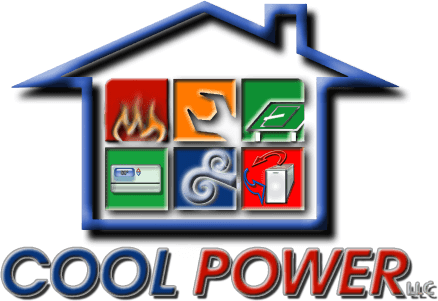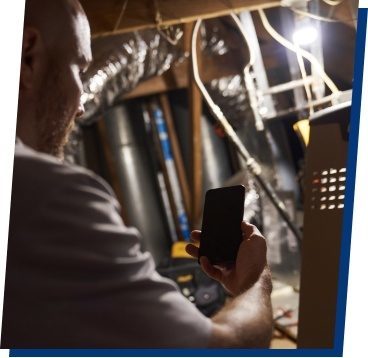A tripping circuit breaker can be troublesome and irritating, especially if your furnace is the cause of the problem. If the breaker switch trips once and resumes normal operation after resetting it, there’s no cause for alarm since a power surge is most likely the culprit. However, you should pay attention to the problem if the breaker switch trips repeatedly.
A tripping breaker might be sending a message, and you should not ignore the warning. Therefore, it’s advisable to call in a heating expert to identify the source of the problem. Below are eight reasons why your home’s furnace could be tripping your breaker and how you can prevent this problem.
1. Dirty Filters
Air filters filter the air that circulates inside your living space. Over time, the filter inside your furnace collects dust and other air contaminants. When neglected, furnace filters can clog, restricting airflow in the furnace. As a result, the HVAC will overwork to heat or cool your indoor environment. The harder your furnace works, the more energy it draws from the circuit, which eventually trips the breaker.
You can avoid this problem by checking your HVAC unit filters more often. How regularly you replace the filters mainly depends on the quality of the filters and your home. If you have pets or reside close to a construction site, you’ll need to change the filters more frequently. You may also need regular air filter changes if you use your HVAC unit throughout the year.
2. Defective Motor
Your furnace’s motor powers the blower. With age, the motor can malfunction due to normal wear and tear. As a result, there will be increased friction, causing your unit to overwork to attain and maintain the set indoor temperatures.
Unusual sounds from the furnace motor before or around the same time the circuit breaker trips indicate a blower motor issue. It’s important to contact an HVAC specialist to check your furnace once you suspect or discover a defect with the heating unit. Ignoring the problem will only create bigger problems that require expensive repairs or emergency furnace replacement.
3. Blocked Air Vents or Registers
Blocked registers or vents are another reason for tripping breakers when the furnace is running. Proper airflow is important for your furnace to work properly and effectively. Similarly to clogged air filters, blocked registers or vents can cause your heating unit to consume more energy than usual to maintain the set temperatures. They can also restrict airflow and force the furnace to overwork, causing your breaker to trip. You can easily prevent this problem by inspecting your home to ensure that no rugs, stacked boxes, furniture, or carpets are blocking your registers and vents.
4. Ground Fault or Short Circuit
If your furnace flips the breaker immediately after startup, chances are there’s an electrical issue within the heating unit. If your furnace has frayed or defective wiring, your breaker will continue tripping. Exposed wires might be shorting your breaker when they touch a neutral wire. The wires can also lead to a ground fault, especially if they come into contact with a metal object or grounded wire.
Both issues can significantly affect the unit’s electrical draw, causing the breaker to trip. If you notice that your furnace trips the breaker every time you switch it on, call an HVAC professional to identify the root cause of the problem. These experts will check the furnace’s electrical connections and wiring and make the necessary repairs.
5. Electrical Panel Issues
The electrical panel might be to blame if your furnace doesn’t have electrical problems. Faulty breakers or poor connections can also cause your breaker to trip. If you live in an older home, you might need to have the electrical panel replaced if it is poorly installed, outdated, or damaged. In this situation, you’ll need the skills of an expert. If you suspect electrical panel problems are affecting your furnace, talk to an electrician as soon as possible.
6. Poor Insulation
HVAC inefficiencies are often caused by air leaks, which can lead to significant energy loss, especially when the outside temperature is very hot or cold. Windows, door frames, and attics are the most common locations of air leaks.
You can solve this problem easily and without spending much money by placing weatherstripping around door frames and windows. Insulating your attic can also prevent air leakages. If you suspect air leaks in your home, contact your HVAC technician to help locate and fix the leaks to make your property more energy-efficient for the winter weather.
7. Overloaded or Shared Circuit
Furnaces are best used on dedicated circuits because they require a lot of power to run. If too many items are connected to one circuit, the breaker will continue to trip. The best solution is to have a dedicated circuit for the furnace to prevent things like lights, appliances, or tools from tripping your breaker. Check all the labels on your home’s electrical panel to see if other appliances share a circuit with the furnace.
If you live in an older home with shared circuits, you can unplug the other items or avoid operating the appliances while the furnace is running. However, have your electrician create a dedicated circuit for your home’s HVAC system for a smarter and more permanent solution.
8. Leaky Ductwork
Your ducts are an essential part of your home’s HVAC equipment. Forced-air heating systems depend on your ductwork to push heated air into your living space. And without quality air ducts, you cannot enjoy quality heating. If some rooms in your house feel warmer or colder than others, you may be dealing with leaks in your ventilation ducts.
Sometimes air ducts can develop cracks, holes, and gaps that allow heated air to leak out. Ductwork leaks reduce HVAC efficiency, and reaching your preferred indoor temperatures will be an uphill battle. Your furnace will therefore run more often and for longer to attain the set temperatures.
Due to the more frequent and longer heating cycles, the fan motor or the furnace will overheat. As a result, the breaker switch will trip to prevent an electrical fire. If you suspect your ducts are leaking, call your HVAC technician immediately. The technician can run checks and clean or repair the ducts to prevent hot air from leaking. This way, your heating system will not overwork to maintain your ideal indoor temperatures.
Talk to the Heating and Cooling Experts
As you can see, a tripping breaker switch caused by your furnace can be due to various things. The good news is that you can prevent these issues by investing in seasonal maintenance. If your home’s circuit breaker is tripping more often, our HVAC team at Cool Power LLC is available to help you prevent fires and property damage. Our experts will inspect the entire unit to locate the cause of the problem and fix it.
In addition to providing furnace repairs, we also install and maintain heating systems and offer a full range of cooling services throughout Ronkonkoma, NY and the surrounding area. For your convenience, we offer maintenance agreements and 24/7 repair services as well. Contact us now to schedule an appointment.


